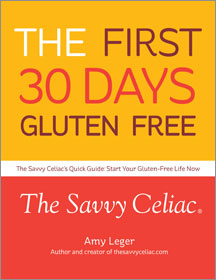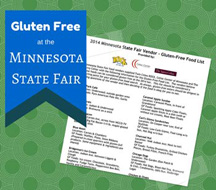So getting a gluten-free lunch at school is a huge undertaking, I have discussed it on this blog before. But how much thought are we as parents giving to the gluten-filled things our kids do and use in class? A mom emailed me today and just brought up the subject which lead to today’s blog.
I do worry about treats that come into class, gingerbread houses that are made and snack time. But have I really dug into the issues of the different kinds of paint, glue…and what about when it’s time to make paper mache? Actually I can honestly say — not so much. I’m dying to know if you’re gasping in shock or nodding in agreement right now. But I digress…
Gluten-Free Art?
Yes… that’s right, we need to worry about whether our kids’ arts and crafts projects are gluten free. When my daughter was in kindergarten I worried about this a lot more. But even when she was that young she wasn’t one to always have her fingers in her mouth or anything. So after playing with glue and Play Doh she knew she needed to wash her hands – and wash them well.
She’s now in fourth grade and her art projects still mostly consist of drawing. But she just told me sometimes they use “fancy paints” for projects which made me wonder about their “gluten-freeness”. I hadn’t thought about it before. For the most part I still don’t worry that much because she knows to wash her hands clean of that stuff. But I did find a good blog post from last May that had the gluten-free status of many art supplies (with their brand names).
So now that I’ve brought up paper mache (also spelled papier mache), I did some investigating. The paste used could be anything from regular flour and water to wallpaper paste (which I think may also have flour in it). Even when they’re mixing it up, that floury mixture must be flying all over in the air. In this case I would sit down with the teacher and ask about the product and the process in which it’s all made. In other words, is it filled with wheat and where do they mix it…is there wheat dust flying everywhere?
The teacher must be educated about gluten and it’s “involvement” with paper mache. See if you can come up with some gluten-free alternatives if you’re not feeling like you’re getting proper cooperation from the teacher. SureFoodsLiving had these recommendations last August:
Here are some wheat-free alternatives to traditional paper mache:
• Make your own paper mache with this recipe from Planet Pals:
Ingredients: Glue, water, paper
Directions:
Mix two parts white glue with one part warm water. Stir well and the Paste is ready to use. Now you need paper-newspaper works well! Dip each piece of paper in the liquid mixture and apply it one piece at a time to form your shapes.
• Claycrete Instant Papier Mache – made from 100% pure paper pulp, you mix with water and knead it and model it.
If these discussions with the school do not yield results the next step I would take is to the principal and school board member. Another thing many parents have is a 504 plan. The American Celiac Disease Allliance walks you through a 504 plan so you know what you are getting into and what your rights are as a parent and for your student.
Gluten-Free Home Ec?
Another concern is Home Economics – even though it’s likely not even called that any more. For us-a few decades ago-that’s what it was called…you sewed, you budgeted for groceries and you cooked. They are all good skills to know until your celiac child finds him or herself elbow deep in whole wheat flour with their friends throwing flour at each other nearby.
I have two thoughts on this; first, see what arrangements can be made for gluten-free ingredients. Even if they can’t do it every day they cook, maybe they can arrange for one gluten-free day where everyone learns about and makes something gluten-free. One mom just told me today she had great success with a willing teacher who allowed her son to cook gluten-free.
However, my second thought is, on the flip side. Someday my kid may very well have to cook something with gluten in it, so maybe she should learn this way. She needs to know about kitchen hygiene and cooking-so she’ll have to wash her hands a lot and not handle messy wheat flour. Again, as long as the celiac child pays attention to cleanliness, I would think it should work fine.
But again, the cooking teacher MUST know about the celiac disease and subsequent gluten-free diet to make the “gluten cooking” even work. I know the kids are usually expected to try the food they make. The teacher needs to know a celiac child cannot even taste one little bit of the finished gluten-filled product.
So have I covered all the bases? As always, if you have feedback or another experience on any of these thoughts please comment below. I know people who would love to hear any hints, success stories, or even some areas in which people have had some trouble.
Tags: 504, art, celiac, cooking, gluten-free, high school, home economics, secondary



January 29th, 2009 at 3:13 pm
Hi Amy
A child in a cooking/home-ec class could wear gloves as they do in many food service restaurants to keep gluten products from getting on their hands.
June 3rd, 2011 at 12:32 am
My son is gluten-free and this is what I use when making paper mache.
http://perfectionismyenemy2000.wordpress.com/2011/06/02/gluten-free-paper-mache/
April 23rd, 2012 at 5:36 pm
Can you really trust the ‘gluten free’ label on a product? From what I understand these things are not that heavily regulated, especially with foods produce outside of the country. I’ve picked up quite a few products only to later find traces of gluten.